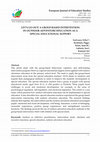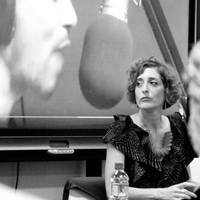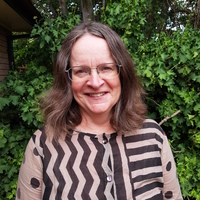Papers by Pigga Keskitalo
University of Warsaw, 2016

European Journal of Education Studies
This article deals with the group-based behavioral, cognitive, and skill-training intervention pr... more This article deals with the group-based behavioral, cognitive, and skill-training intervention program Maltti as a special educational support action applied with outdoor adventure education at the primary school level. The need to apply the group-based intervention arose from the special education teachers’ (N=2) desire to reinforce and expand their pedagogical methods in order to improve the students' development in special education. The special education teachers had a group of pupils with special educational needs, aged from 10 to 11 (5th graders in Finland). These pupils faced challenges in social and emotional development, for example, in the areas of psychological regulation, self-regulation, and emotional regulation. This article is a case study which presents how outdoor adventure education can be implemented in special education. It also describes how special education teachers experienced the group-based intervention intersecting with outdoor adventure education. The...

Handbook of Research on Teaching in Multicultural and Multilingual Contexts
This chapter discusses teachers' professional experiments with distance education in Indigeno... more This chapter discusses teachers' professional experiments with distance education in Indigenous Sami language with children aged six to seven years in Finland. The three Sami languages spoken in Finland have law-based status in the Sami domicile area. Outside of this area, where 75% of Sami children live, the Sami languages are taught as voluntary subjects online. This challenges teachers' culturally responsible land-based pedagogical practices, which are typical of Sami education. The case study investigates one teacher's professional creative experiment that focused on land-based online pedagogies using a participatory approach. The data consist of simulated recall interviews, a logbook, and Post-it® notes. The results indicate that, as reflective practitioner, the Indigenous teacher was able to maintain culturally and linguistically responsible pedagogies through experiment. This study carries a hopeful message for the future of minority communities: through education...
Kasvatus : Suomen kasvatustieteellinen aikakauskirja, 2021

In Australia, Aboriginal and Torres Strait Islander peoples; in Canada, First Nation, Métis and I... more In Australia, Aboriginal and Torres Strait Islander peoples; in Canada, First Nation, Métis and Inuit peoples; in Scandinavia, Sámi and in New Zealand, Maori people; have been the “subjects” of formal and informal research since colonisation. However, in many colonised countries Indigenous people have had limited opportunities to be the researchers or undertake postgraduate study by research. This book explores how Indigenous people may be better supported towards more equitable participation to undertake higher degree research postgraduate studies in higher education institutions internationally. Increasing numbers of Indigenous postgraduate students and researchers is key to enabling leaders and communities, and in the development and understanding of and respect for Indigenous histories, cultures and language within curriculum and pedagogy and approaches to research. Importantly, postgraduate students and researchers can also be agents of power and have the capacity to not only subvert and resist but to positively advance within their own context. There is an important contribution to be made by giving voice to Indigenous postgraduate students so that they can share directly the stories of their experience, their inspirations and difficulties in undertaking postgraduate study. Bringing the topic and the voices of Indigenous students clearly into the public domain provides a catalyst for discussion of the issues and potential strategies to assist future Indigenous postgraduate students and can provide sustainable solution-focused and change-focused strategies to support Indigenous postgraduate students who will go on to become stronger Indigenous educational leaders, in turn supporting the next generation
Johdatus saamelaisten kansanopetuksen ja koulunkäynnin historiaan ■ 27

The aim of this chapter is to introduce Norway’s inclusive education policies for two separate sc... more The aim of this chapter is to introduce Norway’s inclusive education policies for two separate school systems: the national Norwegian and the Sámi systems. This chapter is based on research done in Norway on its national and Sámi schools and their curricula. Norway is an interesting example when it comes to indigenous education and national schools, as state policies on diversity and minority and indigenous issues have been consciously implemented in both school systems. The evolution of these guidelines, as written in education curricula and as implemented in practice, is the core focus of this article. This chapter aims to describe and contemplate the overarching and general tendencies of Sámi schools and issues in Norway, which have received little scholarly attention. We build on and add to the existing research by combining issues related to the national, or mainstream, school systems with issues related to the Sámi school systems. We will present
Luku perustuu saamelaisessa lastentarhaopettajakoulutuksessa pidettyyn opetukseen, jonka aiheena ... more Luku perustuu saamelaisessa lastentarhaopettajakoulutuksessa pidettyyn opetukseen, jonka aiheena oli kulttuurisesti relevantin ja saamelaispedagogiikan mukainen toiminta saamelaisessa varhaiskasvatuksessa. Tässä tekstissä käsitellään saamelaisen varhaiskasvatuksen kasvatustilanteita eri näkökulmista ja tähän perustuen kuvaillaan saamelaispedagogiikan sisältöjä. Teksti perustuu tutkijan omaan tutkimustoimintaan, joka on käsitellyt kulttuurisensitiivisiä oppimistilanteita ja saamelaispedagogiikkaa. Tekstistä saa tukea ja inspiraatiota saamelaisen varhaiskasvatuksen kehittämiseen sekä pedagogisia työkaluja tähän haasteelliseen ja moninaiseen työhön.

Tiivistelmä Luku perustuu saamelaisessa lastentarhaopettajakoulutuksessa pidettyyn opetukseen, jo... more Tiivistelmä Luku perustuu saamelaisessa lastentarhaopettajakoulutuksessa pidettyyn opetukseen, jonka aiheena oli kulttuurisesti relevantin ja saamelaispedagogiikan mukainen toiminta saamelaisessa varhaiskasvatuksessa. Tässä tekstissä käsitellään saamelaisen varhaiskasvatuksen kasvatustilanteita eri näkökulmista ja tähän perustuen kuvaillaan saamelaispedagogiikan sisältöjä. Teksti perustuu tutkijan omaan tutkimustoimintaan, joka on käsitellyt kulttuurisensitiivisiä oppimistilanteita ja saamelaispedagogiikkaa. Tekstistä saa tukea ja inspiraatiota saamelaisen varhaiskasvatuksen kehittämiseen sekä pedagogisia työkaluja tähän haasteelliseen ja moninaiseen työhön.Čoahkkáigeassu Artihkal vuođđuduvvá sápmelaš mánáidgárdeoahpaheaddjeskuvlejumis dollojuvvon oahpahussii, man fáddán lei kultuvrralaččat relevánta ja sámepedagogihka mieldásaš doaibma sápmelaš árrabajásgeassimis. Dán teavsttas rahppojuvvo kultuvrralaččat mearkkašahtti bajásgeassindilli iešguđege geahččanguovlluin ja seammás govviduvvojit sámepedagogihka sisdoalut. Teaksta vuođđuduvvá dutki iežas dutkamušdoibmii, mii lea gieđahallan kultursensitiiva oahppandilálašvuođaid ja sámepedagogihka iešguđege geahččanguovlluin. Teavsttas oažžu doarjaga ja inspirašuvnna sápmelaš árrabajásgeassima ovddideapmái sihke pedagogalaš bargoneavvuid dan gáibideaddji ja máŋggabealat bargui
The Morning Watch: Educational and Social Analysis, Apr 9, 2021

Lecture Notes in Computer Science, 2019
The aim of this study was to find ways to modernize Sami language teaching and teaching in the Sa... more The aim of this study was to find ways to modernize Sami language teaching and teaching in the Sami language with digital technology. We realize the importance of digital technology in enhancing the sociocultural position of minority and Indigenous languages. However, the lack of teaching and learning material in the Sami language is still challenging. Free digital teaching and learning tools could help produce and provide learners with multimodal learning material and new ways of learning. Moreover, competencies in the use of digital technology are an internationally accepted key element of teacher education. The Focus on the North–Digital Learning for Pre- and In-Service Teacher Education Project, funded by Norgesuniversitet in cooperation with the Sami allaskuvla - Sami University of Applied Sciences (SUAS) in Norway and the University of Lapland in Finland, aimed to address challenges affecting education in the Arctic educational context by creating a 15-credit (ECTS) course program with three courses on digital tools in education. SUAS practice schools are in Norway, Finland, and Sweden, so distance learning and teaching didactics were designed as the core of this project. Student teachers and in-service teachers at all education levels participated in the courses. The findings indicated that teachers’ and student teachers’ experiences of personalized collaborative learning in using digital teaching tools to support Sami language teaching were remarkable in practice, as teachers gained access to tools for coping in a demanding educational context. Digitalization provides new ways to improve learning in a threatened language context.
The opinions and ideas expressed in the CICE are solely those held by the authors and are not nec... more The opinions and ideas expressed in the CICE are solely those held by the authors and are not necessarily shared by the editors of the Journal. Teachers College, Columbia University (CU) as a publisher makes no warranty of any kind, either expressed or implied, for information on its CICE Web site or in any issue of CICE, which are provided on an "as is" basis. Teachers College, CU does not assume and hereby disclaim any liability to any party for any loss or damage resulting from the use of information on its CICE Web site or in any issue of CICE.











Uploads
Papers by Pigga Keskitalo
hankkeen yhteisjulkaisu. Oppaan tavoitteena on lisätä tietoisuutta kulttuurisensitiivisyydestä tutkimukseen pohjautuen sekä esitellä käytännön esimerkkejä, jotka ovat
sovellettavissa luokanopettajankoulutukseen sekä vähemmistö- ja maahanmuuttajataustaisten ryhmien ohjaamiseen ja opettamiseen. Kirjasen nimi pohjautuu kahden hankkeen ajatukseen kulttuurisensitiivisyyden soveltamisesta oppilaitoksen ja
opettajan opetustyön arkeen. Opaskirja vastaa tarpeeseen hallita moninaistuva opetuskonteksti. Opettajat ja luokanopettajaopiskelijat tarvitsevat tietoa kulttuurisensitiivisyyden teoriasta ja käytännöstä, jotta he voivat toimia komplekseissa kasvatus- ja
opetustilanteissa. Opaskirjassa kirjoittavat kahden hankkeen asiantuntijat ja erikseen
kutsutut kirjoittajat.
of Education at the University of Lapland. The purpose of this guide is to increase
research-based knowledge of culturally responsive teaching and offer practical examples that can be used in primary school teacher training and when tutoring and
teaching learners with a diverse needs and minority or immigrant backgrounds. The
name of this booklet derives from the idea, shared by the three projects, of applying
culturally responsive teaching in the daily activities of teachers and schools. This
guide is a response to the need to manage increasingly diverse teaching contexts.
Teachers and primary school student teachers need information about the theory
and practice of culturally responsive teaching in order to manage complex educational and teaching situations. The authors of this guide are experts from the three
projects as well as invited writers.
The focus is on the classroom practices and the linguistic and culturalcharacteristicsof
Sámi education. The approach is that of educational
anthropology.
The study also examines how teaching is arranged in practice,
how it succeeds, and what kind of challenges it faces from the point of
view of cultural sensitivity. The core of the study is intertwined with issues
concerning the status, language and culture of indigenous peoples.
The study is a school ethnography, the research material of which comprises
questionnaires (N=108), observations (six schools), teachers’ interviews
(N=15), texts written by pupils, school documents, and the researcher’s
field diaries. The participants of the study are teachers in the Norwegian
Sámi School and their pupils in the primary and lower secondary levels of
the school. The teachers teach Sámi- or Norwegian-speaking classes.
This study examines the cultural sensitivity of the Sámi School through
the socialisation theory of Anton Hoëm and the curriculum theory of
John Goodlad’s Working Group. It is part of research on school culture.
The study material shows that the ways of the Western School dominate
instruction in Sámi schools and is spirally connected with the assimilation,
power relations and socialisation process that the Sámi have experienced.
The way in which the school organises the teaching is connected with the
historical task of the school, with the nature of the school as an organisation,
and with the conditions in which Sámi schools provide their instruction.
This study shows that the Sámi School does not fulfil its socialisation task: it
socialises into mainstream society. From the point of view of Sámi culture,
20
Dieđut 1/2010
enculturation is a challenge, especially because the Sámi curriculum and
its implementation in instruction do not enculturate pupils into Sámi
culture. Through strengthening mediating structures, it might be possible
to succeed better with micro-level teaching and learning than at present.
The Sámi world-view and Sámi values should occupy a central position in
teaching but also in the curriculum. Furthermore, the school should, to a
sufficient extent, focus on the Sámi views of time, place and knowledge.
Therefore, teaching should be organised according to the principles of open
learning environments in the Sámi School. This would also enhance the
revitalisation of the Sámi language. The self-determination of the Sámi
peoplein,
for example, drawing up the curricula and in connection with
school statutes should be strengthened.